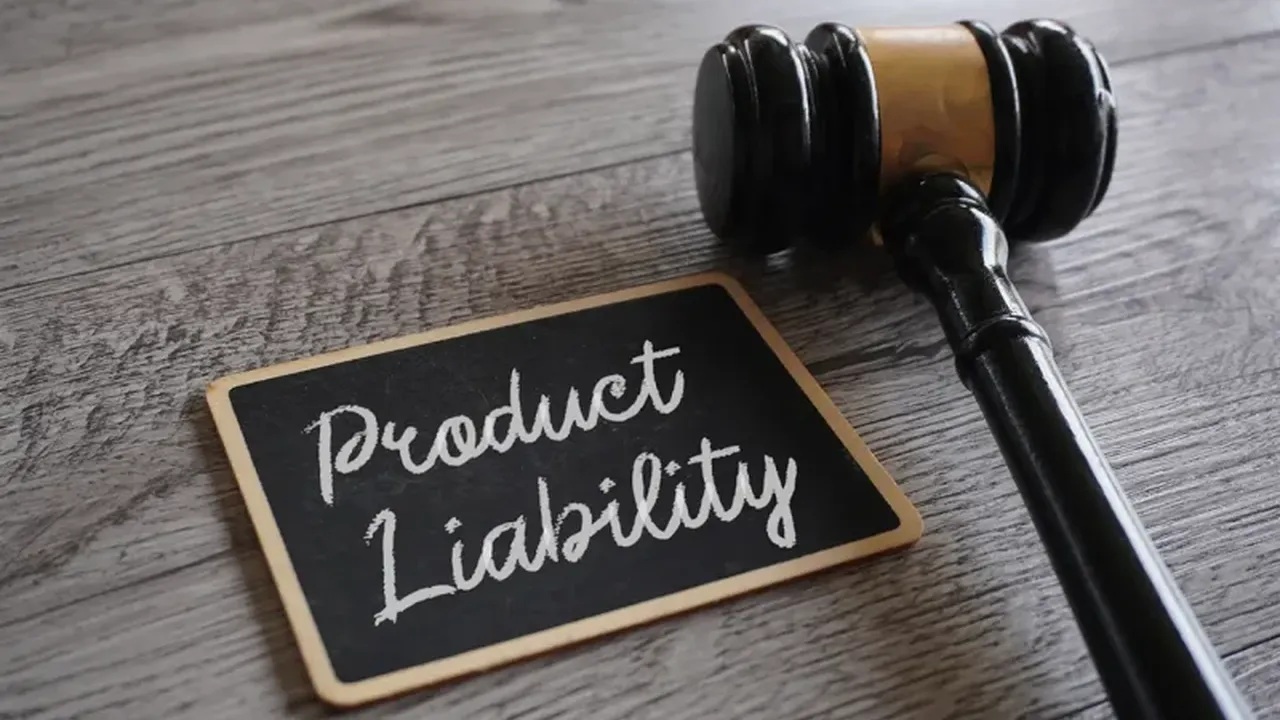3 Common Product Liability Injuries
Learn about the 3 most frequent injuries caused by defective products and their legal impact.

Understanding Product Liability Injuries What You Need to Know
Product liability cases revolve around the idea that consumers have a right to expect products to be safe when used as intended. When a product fails to meet this expectation and causes injury, the responsible parties can be held liable. The types of injuries sustained often depend on the nature of the product and the defect. Let's dive into some of the most common and impactful injuries we see in product liability claims.
Burns and Electrocution Injuries from Defective Electronics and Appliances
One of the most alarming and often severe types of injuries stemming from defective products are burns and electrocution. These injuries frequently occur due to faulty wiring, overheating components, or inadequate insulation in electronic devices and household appliances. Imagine plugging in a new toaster, only for it to spark and catch fire, or a hairdryer short-circuiting and delivering a painful electric shock. These aren't just minor inconveniences; they can lead to life-altering injuries.
Common Scenarios and Product Examples
- Defective Chargers and Batteries: We've all heard stories of smartphones or laptops catching fire due to faulty batteries or chargers. The lithium-ion batteries in many modern devices, while powerful, can be dangerous if defectively manufactured or designed.
- Household Appliances: Toasters, microwaves, electric kettles, and even washing machines can pose burn or electrocution risks if their electrical systems are flawed.
- Power Tools: Drills, saws, and other power tools with exposed wiring or faulty insulation can lead to severe electric shocks.
- Heating Devices: Space heaters, electric blankets, and even curling irons can cause significant burns if they overheat uncontrollably.
Impact and Legal Considerations
Burns can range from first-degree (superficial) to third-degree (full thickness), often requiring extensive medical treatment, skin grafts, and long-term rehabilitation. Electrocution can cause internal organ damage, cardiac arrest, and neurological issues, even if there are no visible external burns. In product liability cases involving burns or electrocution, proving the defect is crucial. This often involves expert testimony from electrical engineers or product safety specialists who can analyze the product and determine the cause of the failure. The legal impact can be substantial, covering medical expenses, lost wages, pain and suffering, and even emotional distress.
Cuts Lacerations and Puncture Wounds from Flawed Tools and Machinery
Another prevalent category of injuries in product liability cases involves cuts, lacerations, and puncture wounds. These injuries typically arise from products with sharp edges that shouldn't be there, inadequate safety guards, or materials that shatter or break unexpectedly. Think about a kitchen knife with a handle that snaps, causing the blade to slip, or a power tool that lacks proper shielding, leading to accidental contact with moving parts.
Common Scenarios and Product Examples
- Kitchen Utensils: Defective knives, blenders, or food processors can cause severe cuts if they break or malfunction during use.
- Power Tools and Machinery: Saws, drills, grinders, and lawnmowers are prime examples where a lack of safety features or a design flaw can lead to deep lacerations or even amputations.
- Children's Toys: Toys with sharp, protruding parts or those that easily break into dangerous shards can cause cuts and punctures to young children.
- Glass Products: Defective glass bottles, windows, or other glass items that shatter unexpectedly can result in numerous cuts.
Impact and Legal Considerations
Cuts and lacerations can range from minor to extremely severe, sometimes requiring stitches, surgery, and leaving permanent scarring. Puncture wounds, especially if deep, carry a high risk of infection and damage to underlying tissues, nerves, and organs. In these cases, the focus of a product liability claim often shifts to design defects (where the product's design itself is inherently unsafe) or manufacturing defects (where a flaw occurred during the production process). Expert witnesses, such as mechanical engineers or product designers, are often called upon to demonstrate how the product was unreasonably dangerous. Compensation can cover medical treatment, reconstructive surgery, therapy, lost income, and significant pain and suffering.
Fractures and Traumatic Brain Injuries from Structural Failures and Falls
Fractures (broken bones) and traumatic brain injuries (TBIs) represent some of the most serious and long-lasting consequences of defective products. These injuries often result from structural failures in products like ladders, furniture, sports equipment, or vehicle components, leading to falls or direct impact. A TBI, in particular, can have profound and permanent effects on a person's cognitive abilities, personality, and overall quality of life.
Common Scenarios and Product Examples
- Ladders and Scaffolding: A common culprit for falls, defective ladders that collapse or scaffolding that fails can lead to severe fractures and head injuries.
- Furniture: Chairs that break, unstable dressers that tip over (especially on children), or cribs with faulty designs can cause significant injuries.
- Sports Equipment: Helmets that fail to protect, faulty bicycles, or defective exercise equipment can lead to fractures, concussions, and TBIs during athletic activities.
- Vehicle Components: Defective tires that blow out, faulty brakes, or airbags that deploy improperly can cause car accidents resulting in severe fractures, spinal cord injuries, and TBIs.
- Children's Products: Playgrounds with structural weaknesses, strollers that collapse, or car seats that fail to provide adequate protection in a crash can lead to devastating injuries to children.
Impact and Legal Considerations
Fractures can range from simple breaks to complex compound fractures, often requiring surgery, casting, and extensive physical therapy. TBIs are particularly concerning, as their effects can be subtle or overt, impacting memory, concentration, mood, and physical coordination. The long-term care and rehabilitation for a severe TBI can be astronomical. Product liability claims involving fractures and TBIs often require extensive medical documentation, expert medical testimony, and accident reconstruction specialists to demonstrate the link between the product defect and the injury. The compensation sought in these cases is typically substantial, reflecting the severe and often permanent nature of the injuries, including future medical care, lost earning capacity, and profound impact on quality of life.
Comparing Product Safety and Liability Across Markets USA vs Southeast Asia
It's important to note that product liability laws and consumer protection standards can vary significantly between regions. For consumers in the USA, product liability laws are generally robust, often operating under principles of strict liability, meaning you don't necessarily have to prove negligence, only that the product was defective and caused injury. In Southeast Asian markets, while consumer protection laws are evolving, they might differ in their scope, enforcement, and the burden of proof required. Some countries may have specific consumer protection acts, while others might rely more on general contract or tort law. This difference can impact how a claim is pursued and the potential for compensation.
What to Do If You're Injured by a Defective Product Your Next Steps
If you or a loved one has been injured by a product you believe was defective, here are some crucial steps to take:
- Seek Medical Attention: Your health is the top priority. Get immediate medical care for your injuries and ensure all treatments are thoroughly documented.
- Preserve the Product: Do not discard, repair, or alter the product in any way. This is critical evidence for your claim. If possible, take photos or videos of the product and the scene of the incident.
- Document Everything: Keep all receipts, packaging, instruction manuals, and any other documentation related to the product. Also, keep a detailed record of your injuries, medical treatments, and how the injury has impacted your life.
- Identify Witnesses: If anyone saw the incident, get their contact information.
- Consult a Personal Injury Lawyer: Product liability cases are complex. An experienced personal injury lawyer specializing in product liability can assess your case, help gather evidence, and navigate the legal process. They can advise you on the specific laws in your region (USA or Southeast Asia) and your best course of action.
Specific Product Recommendations and Comparisons for Safety
While we can't endorse specific products for legal reasons, we can discuss general safety features and considerations when purchasing items that commonly lead to the injuries discussed. This comparison aims to highlight what to look for to minimize risk, rather than recommending specific brands for purchase.
Electronics and Chargers Minimizing Burn and Electrocution Risk
When it comes to electronics, especially chargers and power banks, the market is flooded with options. The key differentiator often lies in safety certifications and build quality. Cheap, uncertified chargers are a frequent cause of fires and electrocution.
- Certified Chargers (e.g., UL, CE, ETL): Look for products with recognized safety certifications. In the USA, UL (Underwriters Laboratories) is a common certification. In Europe and often recognized in Southeast Asia, CE marking indicates compliance with European safety standards. ETL is another common certification. These certifications mean the product has undergone rigorous testing for electrical safety, overheating, and fire hazards.
- Original Equipment Manufacturer (OEM) vs. Third-Party: While third-party chargers can be cheaper, OEM chargers (those made by the device manufacturer) are generally designed to work seamlessly and safely with their specific devices. If opting for third-party, ensure it's from a reputable brand with clear safety certifications.
- Smart Power Strips with Surge Protection: These can protect your devices from power surges and often have individual switches, reducing the risk of overheating when devices are not in use.
Comparison Example (General):
High-Quality Certified Charger (e.g., Anker PowerPort III Nano):
- Features: Multiple safety features like over-voltage protection, temperature control, short-circuit protection. Often uses GaN technology for efficient heat dissipation.
- Typical Use: Daily charging of smartphones, tablets, small laptops.
- Price Range: $15 - $40 USD.
- Safety Advantage: Reduced risk of overheating, fire, and electrocution due to stringent testing and quality components.
Unbranded/Generic Charger (e.g., from an unknown online seller):
- Features: Basic charging function, often lacks clear safety certifications. Components may be substandard.
- Typical Use: Emergency or temporary charging.
- Price Range: $3 - $10 USD.
- Safety Disadvantage: Higher risk of electrical malfunction, overheating, fire, and potential electrocution due to lack of quality control and safety testing.
Tools and Machinery Prioritizing Guarding and Ergonomics
For tools and machinery, especially power tools, the design of safety guards and ergonomic features plays a huge role in preventing cuts, lacerations, and even amputations.
- Integrated Safety Guards: Look for tools with robust, non-removable safety guards that cover moving parts like blades or grinding wheels. For saws, features like blade brakes that stop the blade quickly upon release are crucial.
- Ergonomic Design: Tools that fit comfortably in your hand and reduce user fatigue can prevent accidental slips and loss of control. Anti-vibration features also reduce the risk of repetitive strain injuries.
- Dead Man's Switch: Many power tools should have a 'dead man's switch' or paddle switch that immediately cuts power when the trigger is released, preventing the tool from running unattended.
Comparison Example (General):
Premium Circular Saw with Advanced Safety (e.g., Bosch GKS 18V-68 GC):
- Features: Electronic motor brake, robust blade guard, ergonomic handle with anti-vibration, often includes kickback control.
- Typical Use: Professional construction, demanding DIY projects.
- Price Range: $250 - $500 USD.
- Safety Advantage: Significantly reduced risk of cuts and kickback injuries due to advanced safety mechanisms and superior build quality.
Budget Circular Saw (e.g., generic brand from a discount store):
- Features: Basic blade guard, often less robust, simpler motor, potentially less ergonomic.
- Typical Use: Light, occasional DIY tasks.
- Price Range: $50 - $100 USD.
- Safety Disadvantage: Higher risk of accidental cuts, kickback, and user fatigue leading to errors due to less sophisticated safety features and potentially lower quality materials.
Ladders and Furniture Stability and Weight Capacity
When it comes to items that support human weight, like ladders, chairs, or even cribs, structural integrity and clear weight limits are paramount to prevent fractures and TBIs from falls.
- ANSI/OSHA Compliant Ladders: In the USA, look for ladders that meet ANSI (American National Standards Institute) and OSHA (Occupational Safety and Health Administration) standards. These ensure specific load capacities and structural integrity.
- Stable Furniture Design: For furniture, especially dressers and bookshelves, look for anti-tip kits or designs that are inherently stable. For chairs, check weight ratings and ensure joints are securely fastened.
- Child Safety Standards: For children's furniture (cribs, high chairs), ensure they meet current safety standards (e.g., CPSC in the USA, EN standards in Europe/Asia). These standards address issues like slat spacing, lead paint, and structural stability.
Comparison Example (General):
ANSI Type IA Fiberglass Extension Ladder (e.g., Werner D6228-2):
- Features: Heavy-duty construction, 300 lbs (136 kg) duty rating, non-conductive fiberglass rails, durable rungs, secure locking mechanisms.
- Typical Use: Professional construction, heavy-duty home use.
- Price Range: $300 - $600 USD.
- Safety Advantage: High stability, robust construction, and clear weight limits significantly reduce the risk of collapse and falls, preventing fractures and TBIs.
Light-Duty Aluminum Step Stool (e.g., generic brand):
- Features: Lightweight aluminum, often lower weight capacity (e.g., 200 lbs/90 kg), simpler hinge mechanisms, potentially less stable footing.
- Typical Use: Light household tasks, reaching high shelves.
- Price Range: $20 - $50 USD.
- Safety Disadvantage: Lower weight capacity and potentially less stable design increase the risk of tipping or collapse if overloaded or used improperly, leading to falls and potential injuries.
Remember, this information is for educational purposes and not legal advice. If you've been injured by a defective product, consulting with a qualified personal injury attorney is always the best course of action to understand your specific rights and options.
:max_bytes(150000):strip_icc()/277019-baked-pork-chops-with-cream-of-mushroom-soup-DDMFS-beauty-4x3-BG-7505-5762b731cf30447d9cbbbbbf387beafa.jpg)






